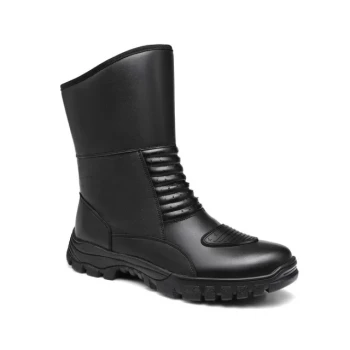At its core, engineered fabric technology enhances military gear by fundamentally improving a soldier's ability to remain undetected while ensuring the equipment remains effective over time. It achieves this by locking in camouflage colors, managing infrared (IR) signatures, and providing inherent resistance to environmental degradation.
The primary advantage of engineered fabric is not just improved aesthetics or durability; it is the integration of multi-spectral concealment properties directly into the material, reducing a soldier's signature in both visible light and through night vision equipment.

The Core Principle: Signature Management
In a military context, a "signature" is any characteristic that makes a person or object detectable. Modern engineered fabrics are designed to manage and reduce these signatures across different spectrums.
Enhanced Visual Concealment
The most basic form of concealment is visual camouflage. Engineered fabrics improve this by ensuring the pattern remains consistent and effective, regardless of wear and tear.
Maintaining Color Integrity
These fabrics are engineered to lock in dyes at a molecular level. This means the critical blacks, greens, and browns of a camouflage pattern will not fade or wash out, even after prolonged exposure to sun and laundering. A faded uniform can create unnatural-looking patches that compromise concealment.
Beyond the Visible Spectrum: Inherent IR Capability
One of the most significant enhancements is how these fabrics perform outside the visible light spectrum, specifically in the infrared range used by night vision devices.
What is an IR Signature?
Night vision goggles (NVGs) don't see color; they detect variations in infrared light reflected by objects. Unprotected synthetic materials, like standard nylon, can appear unnaturally bright through NVGs, making a soldier a glowing target against a dark, natural background.
How Engineered Fabric Reduces IR Detectability
This technology provides inherent IR capability. This means the fabric is designed to reflect IR light at a level similar to the surrounding natural environment (like foliage or soil). Because this property is "inherent"—part of the fabric's structure—it won't wash off or wear out like a temporary chemical coating.
Built-in Environmental Resistance
Military gear is subjected to extreme conditions. Engineered fabrics are built to withstand this, protecting both the soldier and the integrity of the gear's concealment properties.
The Role of UV Resistance
Ultraviolet (UV) radiation from the sun is a primary cause of fabric degradation. It breaks down fibers and causes colors to fade. By building in UV resistance, the fabric maintains its strength and, just as importantly, its camouflage colors for much longer.
The Advantage of "Inherent" Properties
The term inherent is critical. It signifies that these protective qualities—color fastness, IR signature management, and UV resistance—are an integral part of the fabric itself, not a surface treatment. This ensures reliable performance throughout the lifecycle of the gear.
Understanding the Trade-offs
While highly effective, this advanced technology comes with practical considerations that must be weighed during procurement and deployment.
Cost vs. Long-Term Value
Engineered fabrics are typically more expensive to produce than traditional materials. This higher upfront cost must be balanced against the extended service life and superior performance of the gear.
Environmental Specificity
An IR signature that blends perfectly in a lush forest will be ineffective in an arid desert. The technology must be specifically calibrated to the near-infrared reflectance values of the intended operational environment.
Not a Cloak of Invisibility
This technology significantly reduces detectability but does not eliminate it. It is one component of a comprehensive concealment strategy that also includes discipline, movement techniques, and using natural cover.
Matching the Technology to the Mission
Choosing the right gear requires understanding which benefit provides the greatest advantage for a specific objective.
- If your primary focus is long-term cost-effectiveness: The inherent durability and resistance to UV and color fading mean a lower replacement rate and a better return on investment.
- If your primary focus is operator survivability: The IR signature management is the most critical feature, as it directly reduces detectability against modern surveillance and night vision threats.
Ultimately, understanding how these engineered fabrics manage signatures across multiple spectrums empowers you to select gear that offers a decisive operational advantage.
Summary Table:
| Benefit | Key Feature | Operational Impact |
|---|---|---|
| Visual Concealment | Molecular-level dye locking | Pattern remains effective, resists fading from sun/washing |
| IR Signature Management | Inherent IR capability | Reduces detectability against night vision and surveillance |
| Environmental Resistance | Built-in UV and wear resistance | Extends gear lifespan and maintains performance in extreme conditions |
Equip Your Forces with Superior Gear from 3515
As a large-scale manufacturer, 3515 produces a comprehensive range of advanced tactical footwear and gear for distributors, brand owners, and bulk clients. Our production capabilities are tailored to integrate engineered fabric technologies, ensuring your personnel benefit from multi-spectral concealment, durability, and mission-specific performance.
Contact our expert team today to discuss custom solutions that enhance operator survivability and provide a decisive operational advantage.
Visual Guide

Related Products
- Durable Military Combat Boots with Water Drainage for Wholesale & OEM
- Durable Leather Tactical Boots Wholesale & Custom Manufacturing for Brands
- Wholesale Tactical Boots High-Traction & Reflective for Bulk & Brand Orders
- Durable Leather High-Ankle Tactical Boots for Wholesale & Custom Manufacturing
- Wholesale Lightweight Tactical Boots with Dial Closure OEM & Bulk Orders
People Also Ask
- How do tactical boots and combat boots compare in breathability? Tactical Boots Offer Superior Airflow
- What has been the global recognition of fabric for over 30 years? Industry's Trusted Benchmark for Durability
- What are the limitations of combat boots? Understanding the Trade-offs of Rugged Footwear
- What are military boots designed for? Unmatched Durability & Protection for Extreme Conditions
- How can a shiny finish be achieved on military boots? A Step-by-Step Guide to a Mirror Shine



















